A Design and Development of WebGIS Distribution System based on Smart Logistics
- DOI
- 10.2991/jrnal.k.210922.010How to use a DOI?
- Keywords
- Smart logistics; balanced/unbalanced; transportation problem; WebGIS
- Abstract
The vigorous development of the logistics industry provides a solid foundation for China’s economic prosperity. However, with the concept of “smart logistics” proposed, the transformation of the logistics industry to information technology presents great challenges. Aiming at the transportation problem in logistics industry, based on the analysis of the research status at home and abroad, this paper designs a balanced/unbalanced transportation problem solving method based on Monte Carlo similarity and genetic algorithm. In this paper, Monte Carlo similarity method is introduced to design and develop a WebGIS transportation and distribution system based on genetic algorithm. This paper analyzes the information requirements, functional requirements and performance requirements of the transportation and distribution system and gives the overall architecture of the system. The system designs the database table relations and table in detail. Finally, the running test results show that the system can effectively reduce the distribution cost, increase enterprise profits and improve enterprise efficiency.
- Copyright
- © 2021 The Authors. Published by Atlantis Press International B.V.
- Open Access
- This is an open access article distributed under the CC BY-NC 4.0 license (http://creativecommons.org/licenses/by-nc/4.0/).
1. INTRODUCTION
Modern logistics industry is based on information technology and transportation technology, so the logistics process itself is completed by the transportation system supported by information technology. If modern logistics industry is not supported by transportation industry, it is not the real logistics industry. The modern logistics industry is composed of goods packaging, goods loading and unloading, goods allocation, goods management and goods storage and transportation, which are all around transportation. Therefore, the study of transportation is very important and it has a strong practical significance.
In this paper, a genetic algorithm based on Monte Carlo similarity is proposed for transportation problem, and Monte Carlo similarity operator is constructed to avoid the algorithm falling into local optimal solution. The research and development system has a certain practical significance for the promotion and development of intelligent logistics [1].
An intelligent optimization algorithm based on the combination of Monte Carlo similarity and genetic algorithm is designed. The Monte Carlo similarity receiving method is introduced, and the conclusion that the genetic algorithm based on Monte Carlo and adopting matrix coding is better [2].
This paper introduces the transportation problems in logistics industry and the research background and the significance of Web Geographic Information Systems (WebGIS). It expounds the transportation problems and the research status of WebGIS at home and abroad. It is combined with Arc Geographic Information Systems (ArcGIS) platform. It is studied and designed the transportation problem solving method combining Monte Carlo similarity and genetic algorithm, and based on this theory. It develops the transportation problem solving method including task list module, task creation module, task management module, task management module and task management module. The WebGIS transportation and distribution system consist of six functional modules: Original Duration (OD) cost module, distribution scheme module, task analysis module and personal center module.
2. OVERALL SCHEME DESIGN
This paper analyzes the research background and significance of transportation problems in logistics industry. And it introduces the research status of transportation problems and WebGIS technology at home and abroad. This paper describes some basic theories involved in the algorithm, such as genetic algorithm, Monte Carlo, similarity theory and related technical framework of WebGIS transportation and distribution system.
2.1. Front End Architecture
This paper uses bootstrap that is very popular nowadays. Vue.js.Bootstrap is an open source CSS framework developed by twitter engineers Jacob Thornton and Mark Otto to improve code reusability. Bootstrap is a flexible, elegant, easy to use and extensible front-end framework.Vue. It is a progressive framework for building the front-end interface. Different from other frameworks, it can be applied layer-by-layer from bottom to top and developed based on Model-View-ViewModel (MVVM) mode Vue.JS Framework [3]. MVVM pattern is Vue.JS, one of the biggest features of the pattern architecture that is shown in Figure 1.
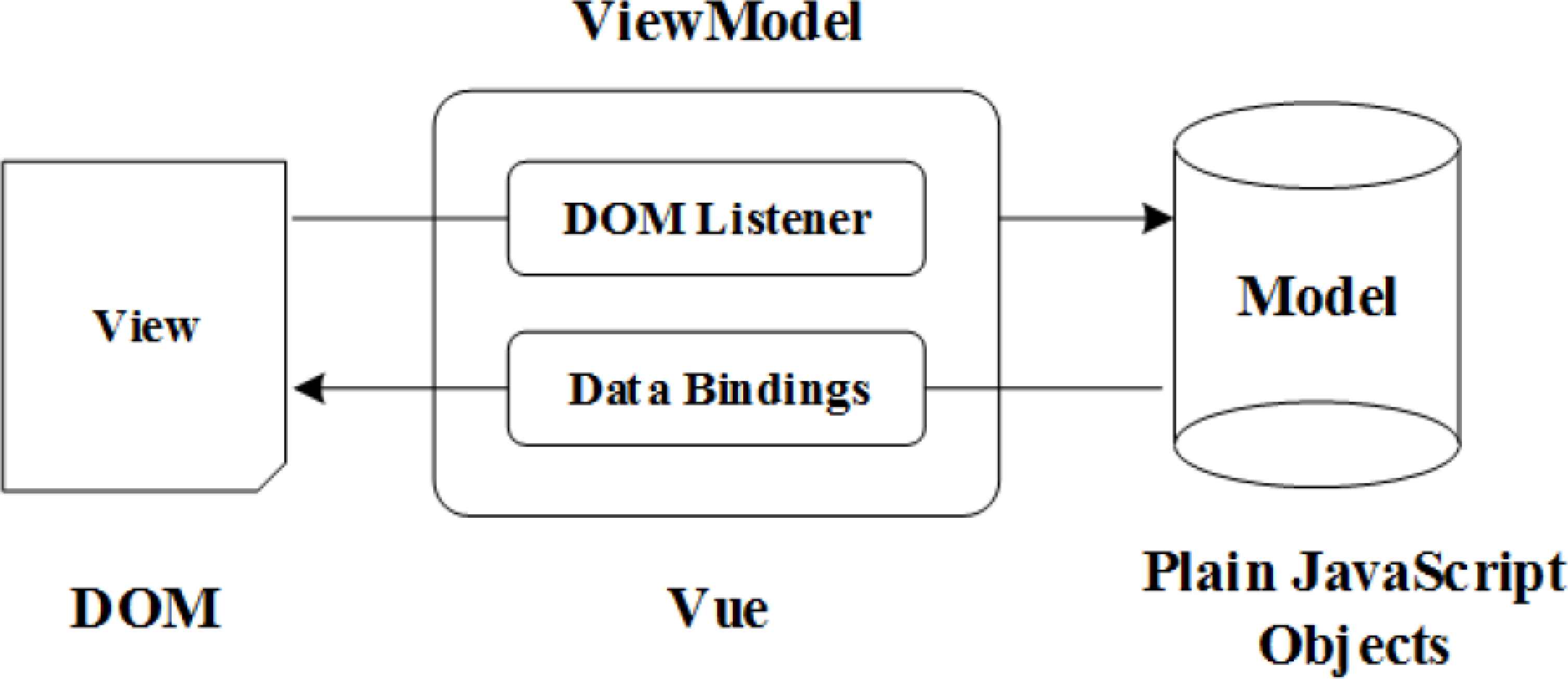
Vue.JS MVVM mode architecture diagram.
2.2. Back End Architecture
The Springboot solves the characteristics of various configuration, low development efficiency and complex deployment of back-end development. The Maven dependency is simplified by using start Page Object Model (POM), and the configuration is completed by annotation. The single instance servlet improves the running efficiency. It is adopted, combined with spring, spring Model View Controller (MVC) and mybatis framework to complete the development. Therefore, spring takes Intelligent Operations Center (IOC) and Aspect Oriented Programming (AOP) design patterns as the core to construct a bean container to store singleton objects. The architecture of spring is shown in Figure 2.
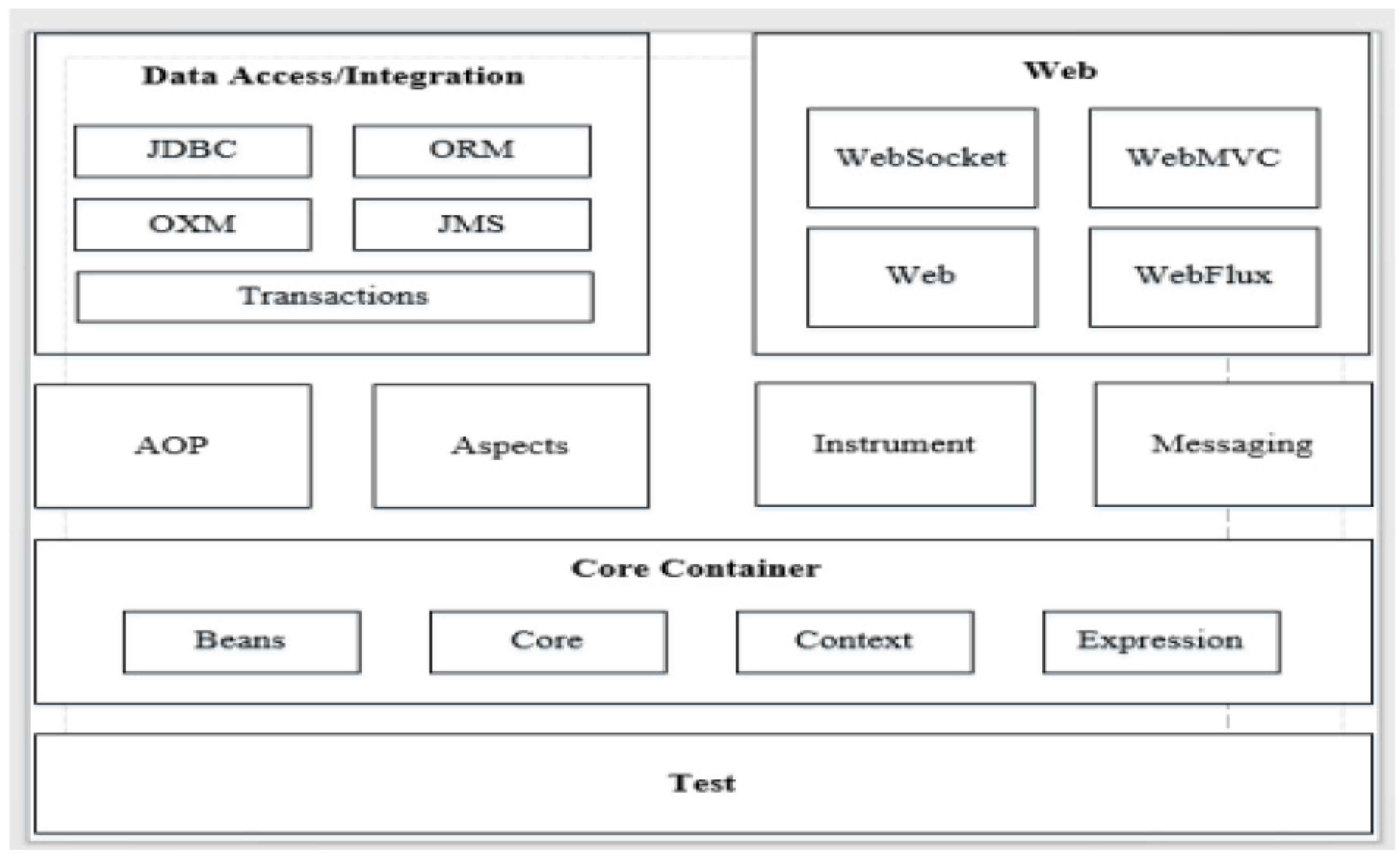
Spring architecture diagram.
3. DESIGN AND SOLUTION OF TRANSPORTATION MODEL
3.1. Balanced Transportation Model
The equilibrium transportation problem is described as follows: suppose a product has m producing areas W1, W2, ..., Wm and N outlets Q1, Q2, ..., Qn. Among the output of producing area is Wi, and the sales volume is Qj. The cost of transporting a unit of goods from Wi to Qj with a certain route s in a certain period of time is Cij(t, s), which is represented by Cij below. Schematic diagram of origin and sale of place [4] is shown in Figure 3.
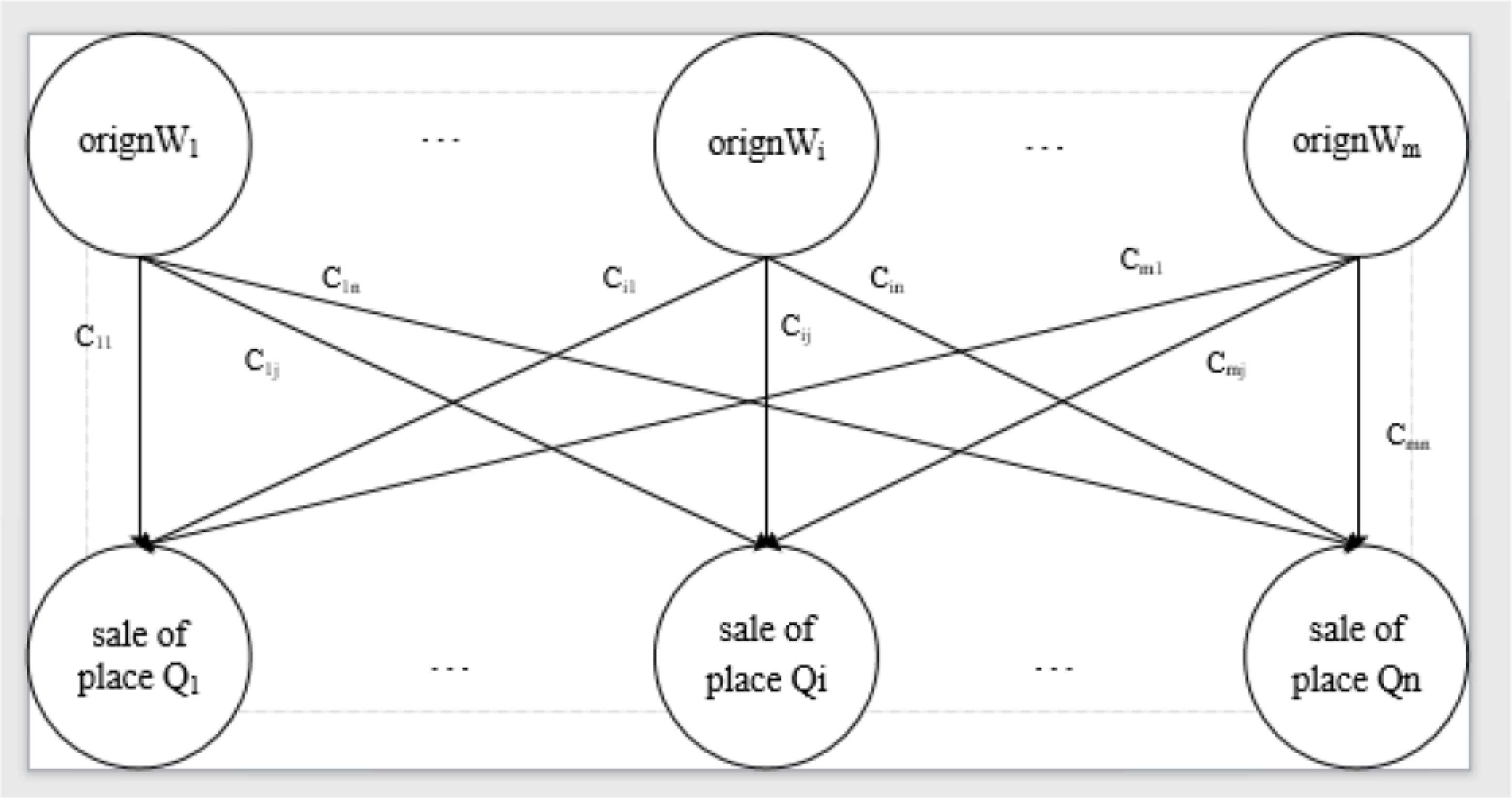
Schematic diagram of origin and sale of place.
3.2. Fitness Function Design
The fitness function of genetic algorithm is used as an index to evaluate the quality of individuals in a population. The larger the fitness value is, the better the individual is. The fitness function is shown below.
3.3. Solving Transportation Problems
The algorithm process steps are as follows:
- •
Set the operation parameters;
- •
Initial population;
- •
The fitness of each chromosome was calculated;
- •
The chromosomes were sorted according to the fitness;
- •
The first 10% individuals with high fitness were reserved;
- •
Monte Carlo similarity method is used to receive the difference solution between the mutated individual and the mutated parent [5].
3.4. Algorithm Results and Analysis
Transportation problem is a very common research topic in real life. In the actual transportation problem, it is often necessary to consider the factors such as comprehensive scheduling, task arrangement and weather environment. Its essence is a complex scheduling problem, which is classified into the category of linear programming and solves a kind of problem of the dispatching scheme of production and sales places. Transportation problems are mainly divided into two categories. One is balanced transportation problem, the other is unbalanced transportation problem.
In this chapter, firstly the models of balanced and unbalanced transportation problems are described, and the transformation relationship between balanced and unbalanced transportation problems is discussed. Then the Genetic Algorithm (GA) based on PR ü fer number coding and the GA algorithm based on matrix coding are introduced to solve the balanced transportation problem [6].
In view of the above-mentioned algorithm, the Monte Carlo similarity receiving method is designed, and the dynamic mutation rate and random mutation strategy are adopted. Finally, the average value of the optimal value in each iteration, the fitness of the average value of the optimal value in each iteration and the deviation rate between the average value of the optimal solution. The known optimal solution under different scales of Traditional Genetic Algorithm (TGA), Micro-Genetic Algorithm (MGA), Improved Traditional Genetic Algorithm (ITGA) and Immune Genetic Algorithm (IMGA) are compared. The results show that the performance of IMGA algorithm is better than the other three algorithms. TGA, MGA, ITGA and IMGA algorithms converge to the average fitness of the optimal value of each iteration are shown in Figure 4.
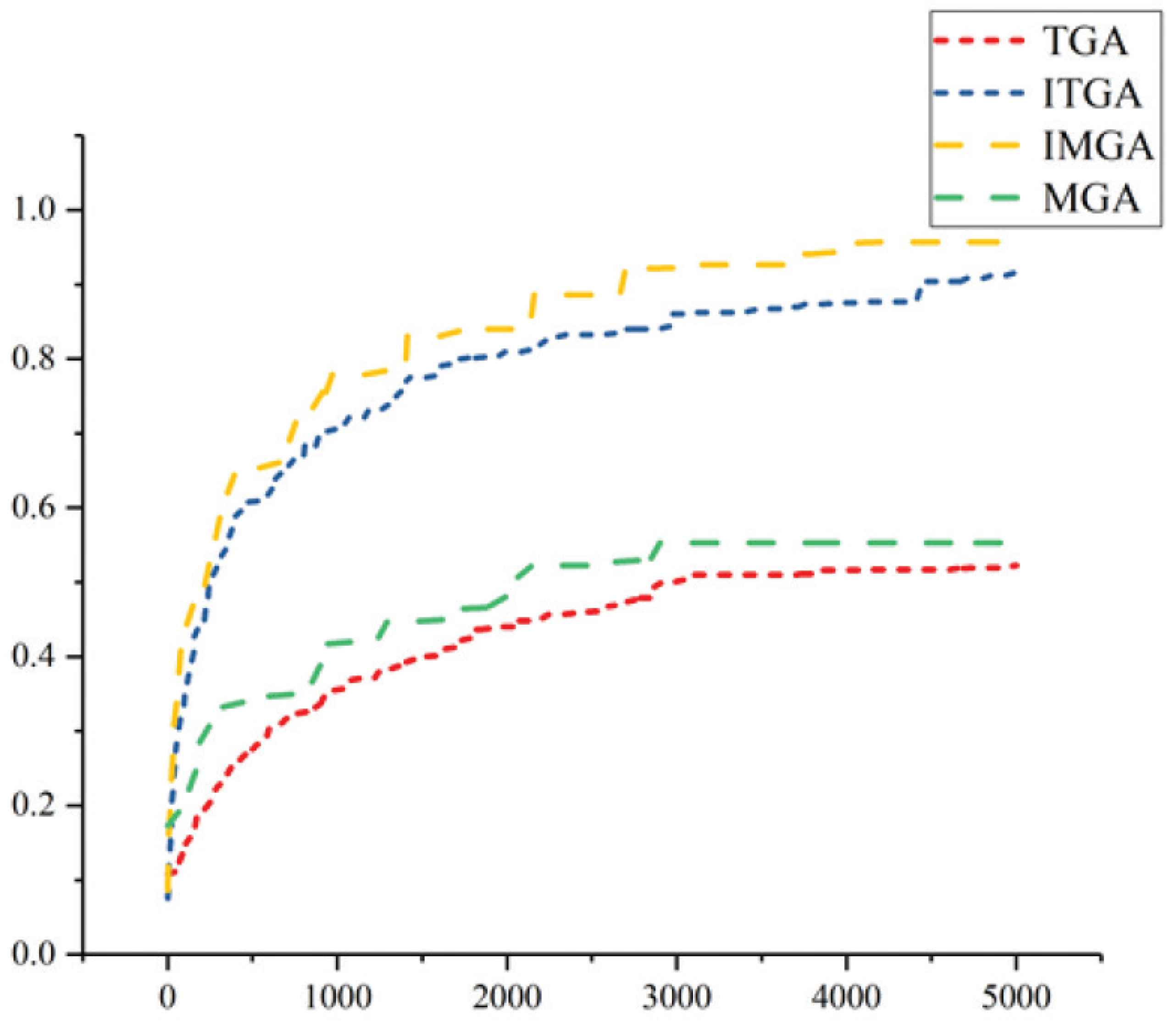
TGA, MGA, ITGA and IMGA algorithms converge to the average fitness of the optimal value of each iteration.
4. DESIGN OF WebGIS DISTRIBUTION SYSTEM
4.1. System Requirements Analysis
The WebGIS transportation and distribution system abandons the previous purely digital representation. It combines the GIS system to introduce spatial relationships into the transportation and distribution system, and selects production and sales locations in an intuitive and optional way. The system is mainly based on the task creation module. It is supplemented by task list module, OD cost module, distribution plan module, task analysis module and personal center module.
4.2. System Technical Route
The WebGIS transportation and distribution system adopts the B/S architecture model, which reduces the burden of the client on the server and the cost of system maintenance and upgrades. The system server level uses the GIS server in ArcGIS Enterprise and the Tomcat-based Web server. The system uses the Spring SpringMVC MyBatis (SSM) framework, which is divided into a presentation layer, a business processing layer and a data persistence layer [7].
4.3. System Database Design
The design of the system is mainly based on the task creation module. The table structure and relationship are designed in a task-driven way, including system user table, task list, expense table, expense detail table, distribution table, distribution details table, and algorithm analysis table, sales surface, algorithm iteration record table, etc.
4.4. System Function Module Design
According to the actual system requirements, the WebGIS transportation and distribution system is equipped with various module functions of WebGIS, which are mainly divided into six modules: task list module, task creation module, OD cost module, distribution plan module, task analysis module and personal center module.
4.5. System Function Module Analysis
The distribution plan module plays the role of query of calculation results in the WebGIS transportation and distribution system. This module undertakes the task creation module and the OD expense module, obtains the preprocessing data necessary for the algorithm. It calls the intelligent algorithm according to the task. The distribution plan module visually allows users to view the distribution of production and sales. With WebGIS technology, the production and sale area are marked in the form of a map. The number and shapes are combined to achieve the purpose of abstract digital visualization.
5. CONCLUSION
This article aims at the completeness and ease of use. The specific operation process of the WebGIS transportation and distribution system is shown in Figure 5.
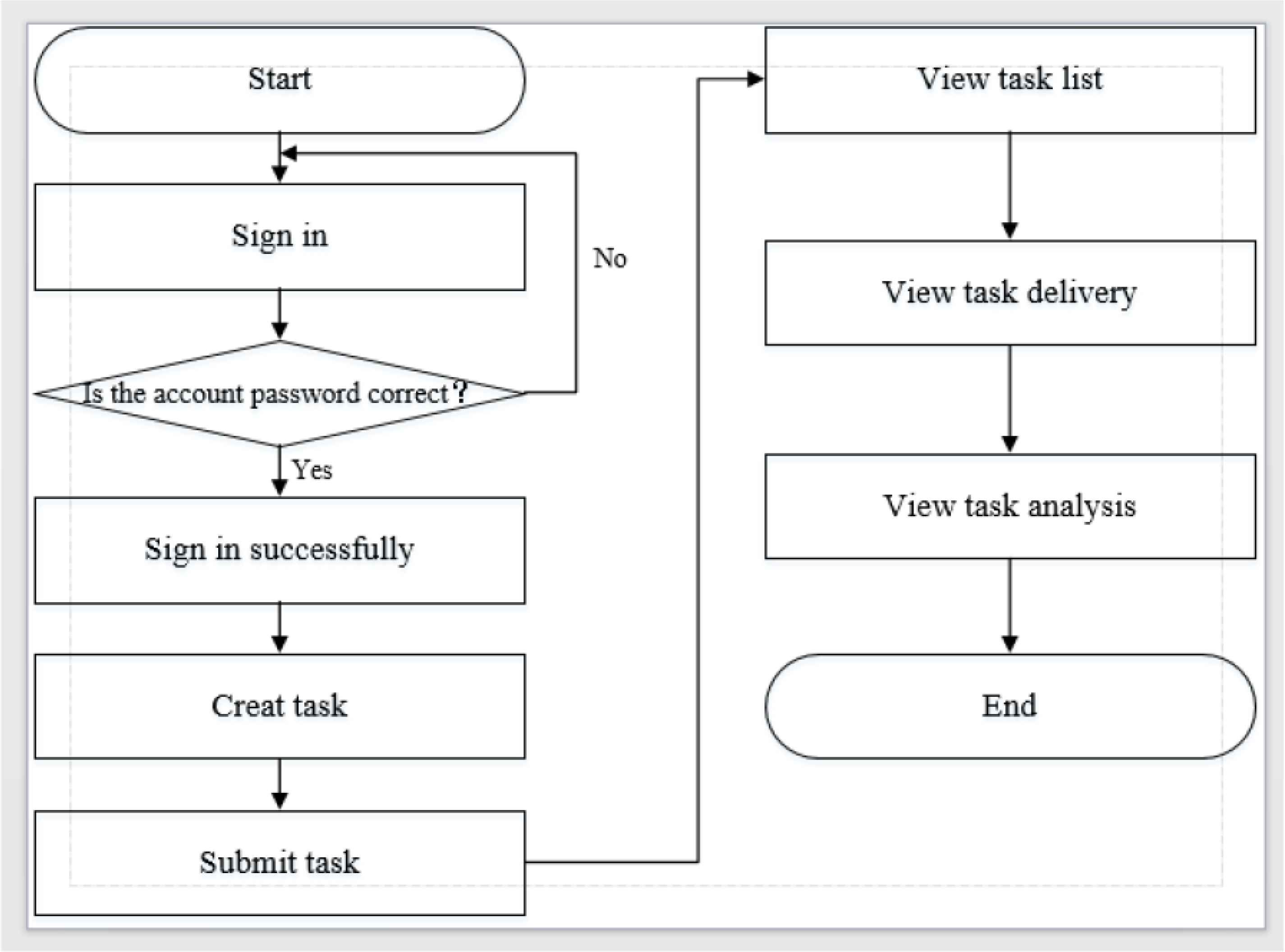
WebGIS distribution system flow chart.
This paper takes the transportation and distribution system of a logistics company as the background. It combines the Monte Carlo similarity GA transportation problem algorithm based on matrix coding on the basis of considering the actual transportation problem requirements. The front-end framework uses Bootstrap, Vue.js and ArcGIS API for JavaScript [7]. The back-end framework adopts SSM and other Web system development technologies, and with the help of ArcGIS platform.
The WebGIS system that meets transportation and distribution is finally designed and realized. The system uses Intellij idea as the integrated development environment. The core algorithms and back-end services are built in Java language. The front-end development framework uses ArcGIS API for JavaScript, Bootstrap and Vue.js, etc., and data storage and management uses MySQL and ArcGIS DataStore [8].
CONFLICTS OF INTEREST
The authors declare they have no conflicts of interest.
ACKNOWLEDGMENTS
The research is partly supported by the Project of Tianjin Enterprise Science and Technology Commissioner to Tianjin Tianke Intelligent and Manufacture Technology Co., Ltd (19JCTPJC53700). It is also supported by the Industry-University Cooperation and Education Project (201802286009) from Ministry of Education, China.
AUTHORS INTRODUCTION
Ms. Hongbo Hao
 She is a first-year master candidate in Tianjin University of Science and Technology, majoring in pattern recognition, principle of automatic control, engineering mathematics and other important control disciplines. Her research area is about deep learning and image processing. During her study, she has published several research papers.
She is a first-year master candidate in Tianjin University of Science and Technology, majoring in pattern recognition, principle of automatic control, engineering mathematics and other important control disciplines. Her research area is about deep learning and image processing. During her study, she has published several research papers.
Dr. Fengzhi Dai
 He received an M.E. and Doctor of Engineering (PhD) from the Beijing Institute of Technology, China in 1998 and Oita University, Japan in 2004 respectively. His main research interests are artificial intelligence, pattern recognition and robotics. He worked in National Institute of Technology, Matsue College, Japan from 2003 to 2009. Since October 2009, he has been the staff in Tianjin University of Science and Technology, China, where he is currently an Associate Professor of the College of Electronic Information and Automation.
He received an M.E. and Doctor of Engineering (PhD) from the Beijing Institute of Technology, China in 1998 and Oita University, Japan in 2004 respectively. His main research interests are artificial intelligence, pattern recognition and robotics. He worked in National Institute of Technology, Matsue College, Japan from 2003 to 2009. Since October 2009, he has been the staff in Tianjin University of Science and Technology, China, where he is currently an Associate Professor of the College of Electronic Information and Automation.
REFERENCES
Cite this article
TY - JOUR AU - Hongbo Hao AU - Fengzhi Dai PY - 2021 DA - 2021/10/09 TI - A Design and Development of WebGIS Distribution System based on Smart Logistics JO - Journal of Robotics, Networking and Artificial Life SP - 201 EP - 204 VL - 8 IS - 3 SN - 2352-6386 UR - https://doi.org/10.2991/jrnal.k.210922.010 DO - 10.2991/jrnal.k.210922.010 ID - Hao2021 ER -
